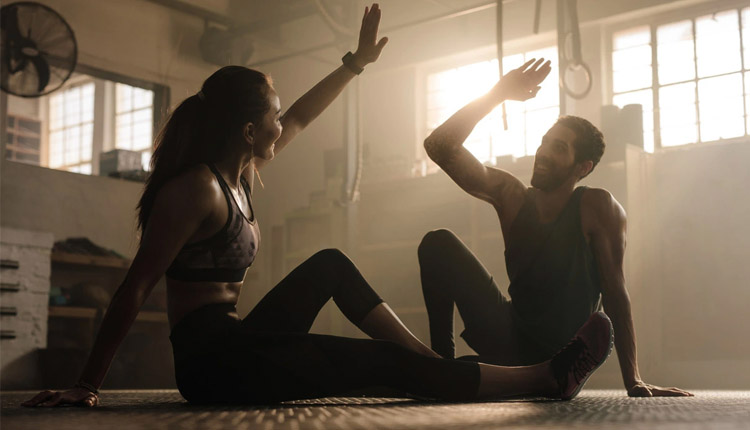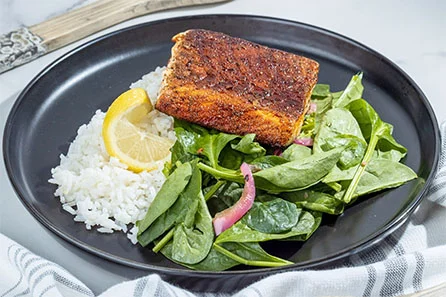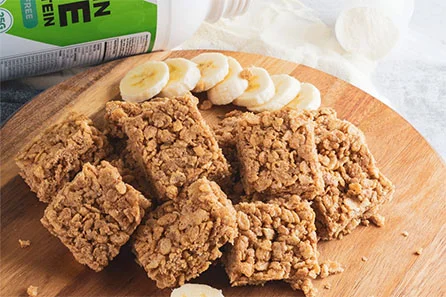It is important to exercise regularly and stay active in order to maintain a healthy lifestyle. Exercising helps to improve overall health and fitness, and can prevent or manage various health conditions. Staying active also helps to reduce stress and promote positive mental health.
There are many ways to exercise and stay active, so there is sure to be something that suits everyone. Some popular options include walking, running, cycling, swimming, and going to the gym. It is important to find an activity that you enjoy, as this will make it more likely that you will stick to it in the long term.
It is recommended that adults should do at least 150 minutes of moderate intensity aerobic activity every week, or 75 minutes of vigorous intensity aerobic activity. This can be broken down into shorter sessions of 10 minutes or more. It is also important to do strength training exercises at least two times per week.
If you are new to exercise, it is important to start slowly and gradually build up your activity levels. It is also a good idea to speak to a doctor or health professional before starting any new exercise program.
Exercise can help improve your health
It can help you:
- Maintain a healthy weight
- Reduce your risk of heart disease
- Reduce your risk of type 2 diabetes and metabolic syndrome
- Reduce your risk of some cancers
- Strengthen your bones and muscles
- Improve your mental health and mood
- Boost your energy levels
Exercise has been shown to be especially helpful in reducing the risk of heart disease and stroke. In fact, the American Heart Association recommends that everyone get at least 150 minutes of moderate-intensity aerobic activity or 75 minutes of vigorous-intensity aerobic activity each week (or a combination of both).
If you’re not used to exercising, start out slow and gradually increase your activity level.
Different Exercises and Alternate Methods
There are a variety of exercises that can be done to work the muscles in your arms, shoulders, and back. If you are unable to do a certain exercise, there are usually alternate methods that can be done instead.
One exercise to work the biceps is called the bicep curl. To do this exercise, stand with your feet shoulder-width apart and your knees slightly bent. Start with your arms at your sides, holding dumbbells in each hand. Slowly curl the weights up to the front of your shoulders, keeping your upper arms stationary. Squeeze your biceps at the top of the curl, and then slowly lower the weights back to the starting position.
Another exercise that works the biceps is the hammer curl. To do this exercise, stand with your feet shoulder-width apart and your knees slightly bent. Start with your arms at your sides, holding dumbbells in each hand. Keeping your palms facing your thighs, slowly curl the weights up to the front of your shoulders. Squeeze your biceps at the top of the curl, and then slowly lower the weights back to the starting position.
An exercise to work the triceps is the tricep extension. To do this exercise, sit on a bench with your feet flat on the floor and hold a dumbbell in your right hand. Place your right elbow on your right knee and extend your arm straight up, keeping your upper arm close to your head. Keeping your elbow stationary, slowly lower the weight until your arm is parallel to the floor. Squeeze your triceps at the bottom of the extension, and then slowly raise the weight back to the starting position.
An exercise that works the shoulders is the shoulder press. To do this exercise, sit on a bench with your feet flat on the floor and hold a dumbbell in each hand at shoulder level, with your palms facing forward. Press the weights straight overhead, and then slowly lower them back to the starting position.
An exercise that works the back is the lat pulldown. To do this exercise, sit on a lat pulldown machine with your feet flat on the floor and your knees bent. Grasp the bar with your hands shoulder-width apart and pull it down to your chest. Pause for a moment, and then slowly return the bar to the starting position.
These are just a few of the many exercises that you can do to work the muscles in your arms, shoulders, and back. If you are unable to do a certain exercise, there are usually alternate methods that can be done instead. Talk to your doctor or physical therapist about which exercises are best for you.

Don’t Skip Leg Day!!!
One of the most popular excuses for skipping leg day is that it’s too hard. And, it’s true, working out your legs can be tough. But, it’s also one of the most important things you can do for your overall health and fitness.
The benefits of working out your legs are numerous. Stronger legs mean more power and endurance for activities like running, biking, and swimming. They can also help to improve your balance and prevent falls. Working out your legs can also help to reduce the risk of injuries in other parts of your body, such as your back and knees.
So how do you make sure you don’t skip leg day? First, it’s important to find exercises that you enjoy. If you hate running, don’t force yourself to do it. Instead, try other activities like swimming, biking, or even walking.
Second, it's important to mix up your workouts. If you always do the same exercises, you’ll quickly get bored and less likely to stick with it. Try different exercises and switch things up on a regular basis.
Third, it’s important to set realistic goals. If you’re just starting out, don’t try to do too much too soon. Start slow and gradually increase the intensity of your workouts as you get stronger.
Finally, it’s important to find a workout partner or group. Working out with others can help to motivate you and make the whole process more enjoyable.
There are a variety of lower body exercises that can be performed to tone and strengthen the legs and buttocks. These include squats, lunges, and leg presses.
Squats are a great exercise for toning the thighs and buttocks. To perform a squat, stand with your feet shoulder-width apart and lower your body down as if you were going to sit in a chair. Make sure your knees don’t extend past your toes and hold the squat position for a few seconds before returning to standing.
Lunges are another excellent exercise for toning the lower body. To do a lunge, stand with your feet shoulder-width apart and take a large step forward with one leg. Lower your body down so that your back knee is almost touching the ground and your front thigh is parallel with the floor. Hold this position for a few seconds before returning to standing and repeating with the other leg.
Leg presses are a great way to tone the quadriceps (thigh muscles). To do a leg press, sit in a chair with your back against the backrest and your feet flat on the floor. Place your hands on your thighs and press down, straightening your legs. Return to the starting position and repeat.
These are just a few of the many lower body exercises that can be performed to tone and strengthen the legs and buttocks.

Talk to Your Doctor
If You're New to Exercising
If you're new to exercising, it's important to talk to your doctor before starting an exercise program. Your doctor can help you create a safe and effective workout plan that fits your individual needs and health goals.
Your doctor can also offer guidance on how to deal with any medical conditions that may impact your ability to exercise safely. For example, if you have diabetes, your doctor can help you figure out how to monitor your blood sugar levels during and after workouts.
If you have any other health concerns, be sure to discuss them with your doctor before starting an exercise program. Once you get the green light from your doctor, you'll be on your way to a healthy and active lifestyle!










